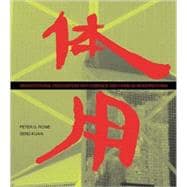
| List of Illustrations | p. viii |
| Acknowledgments | p. xii |
| Traditionalism versus Modernism in China | p. 2 |
| Foreign Influences and the First Generation of Chinese Architects | p. 24 |
| Four Architectural Attitudes toward Modernization | p. 55 |
| The "Big Roof" Controversy | p. 87 |
| Struggles with Modernism | p. 107 |
| The "Culture Fever" | p. 137 |
| A Commodification and Internationalization of Architecture | p. 161 |
| Modernization in China | p. 200 |
| Profiles of Selected Chinese Architects and Schools | p. 214 |
| Glossary of Terms | p. 232 |
| Notes | p. 249 |
| Illustration Credits | p. 267 |
| Index | p. 268 |
| Table of Contents provided by Ingram. All Rights Reserved. |
The New copy of this book will include any supplemental materials advertised. Please check the title of the book to determine if it should include any access cards, study guides, lab manuals, CDs, etc.
The Used, Rental and eBook copies of this book are not guaranteed to include any supplemental materials. Typically, only the book itself is included. This is true even if the title states it includes any access cards, study guides, lab manuals, CDs, etc.